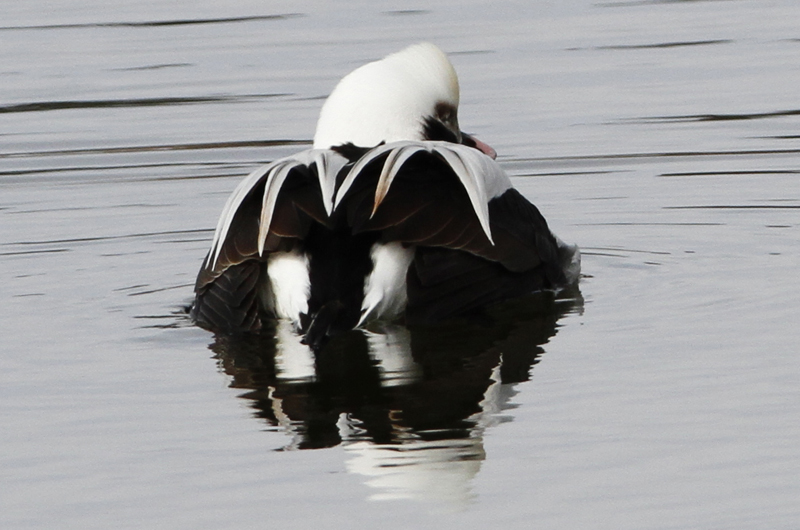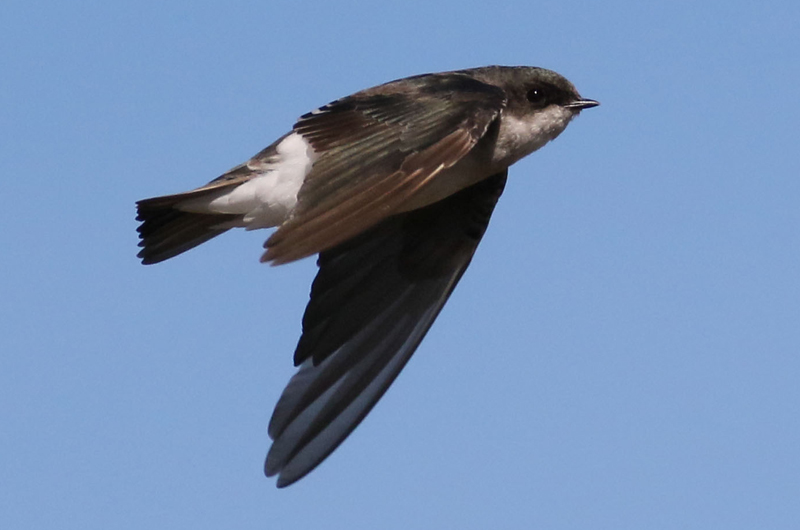Last week this column talked about how snowy weather can affect birds. This week it is about the snowy owl that has been seen on Norton Point Beach for the past two weeks or so. This owl is nearly all white, almost completely lacking any black streaking, so this owl is an adult male.
Many people observed this owl over the weekend of Jan. 14 and 15, including Jeff Bernier, Michael Blanchard, Lanny McDowell, Ken Magnuson, Melissa Keeler and Rick Dwyer. Quite a few people I have talked to have yet to see a snowy owl in the past few years, so this is a good opportunity as it is often not too far out on Norton Point.
A second snowy owl is further east, on Chappaquiddick’s Leland Beach. It is heavily streaked black and white, probably a first year bird, Sara Piazza was the most recent to see this owl on Jan. 15. This owl might be found on a walk from Dike Bridge.
According to the website ebird, there are snowy owls from mid-coast Maine to southern Delaware. And for the fourth straight year there are quite a few in the Cape and Islands area. Will we revert back to historic frequencies, when snowies were scarce or absent through most winters or is this the new normal?
Bird Sightings
I birded Sengekontacket Pond on the morning of Jan. 14 and found a low number of ducks there. The highlight of the day was finding one female Barrow’s goldeneye with a flock of 40 common goldeneye. This individual was distinctive because of the shape of its forehead and the almost entirely yellow beak. Common goldeneye females will have at most yellow at the tip of their beaks. Unless they are close to the shore, this would be a difficult species to identify without a spotting scope. No Barrow’s goldeneye were found on last month’s annual Christmas Bird Count.
The only other ducks I found on the pond were several flocks of bufflehead totaling 120 individuals, two dozen black ducks, a couple of mallard, and eight common eiders. This is about as empty as I have ever seen the pond. On Sarson’s Island there were five black-bellied plover, 45 dunlin, and numerous herring and great black-backed gulls.
Albert Fischer reports a long-tailed duck in Menemsha Harbor on Jan. 10, an individual that was also observed by Catherine Deese. It is not often that we get close-up views of this seaduck. Generally, they are seen in the ocean or flying over it, often quite a ways out to sea.
Mr. Fischer also reports a lone tree swallow flying over the snow and ice of Chilmark Pond on Jan. 10. And Hilary Blocksom reports that the flock of tree swallows at Brookside farm was last seen on Jan. 12. Allen Keith reports that the flock that was at the Keith Farm has left. These may be the last sightings of the migrating tree swallows, as sightings after early January, once winter really sets in, are few and far between.
Our winter-resident robins are in the news, as Antone Lima observed about 100 robins in the wetlands along Dike Road. They were feasting on the bright red winterberries on Jan. 11. Allouise Morgan reports that robins have stripped all the winterberries from her bushes. Nancy MacMullen found a couple of them eating cedar berries, and Rick Karney has observed them eating holly berries. There are about six robins in my neck of the woods and they are avidly consuming holly berries.
Perhaps the most amazing thing about these birds is that I have been hearing them sing just about every morning for the past week or so. And on the morning of Jan. 16, tufted titmice and Carolina wrens were also singing. Perhaps these are first signs of spring?
Southbound migration is pretty much over but there are plenty of birds to find; please look for them and report your sightings to birds@mvgazette.com.
Robert Culbert leads Guided Birding Tours and is an ecological consultant living in Vineyard Haven.











Comments
Comment policy »